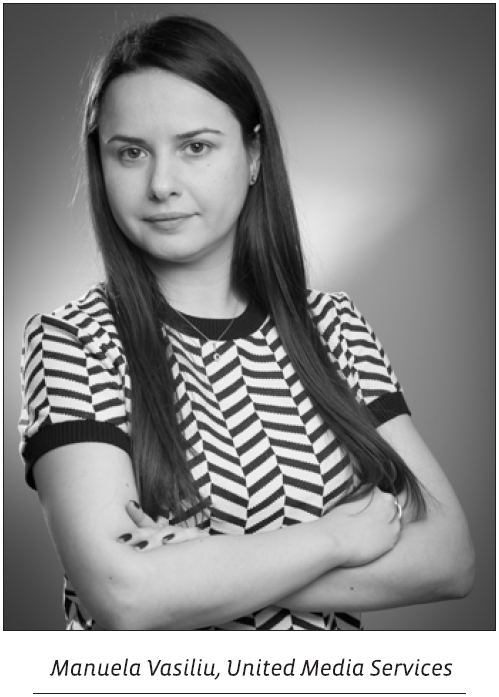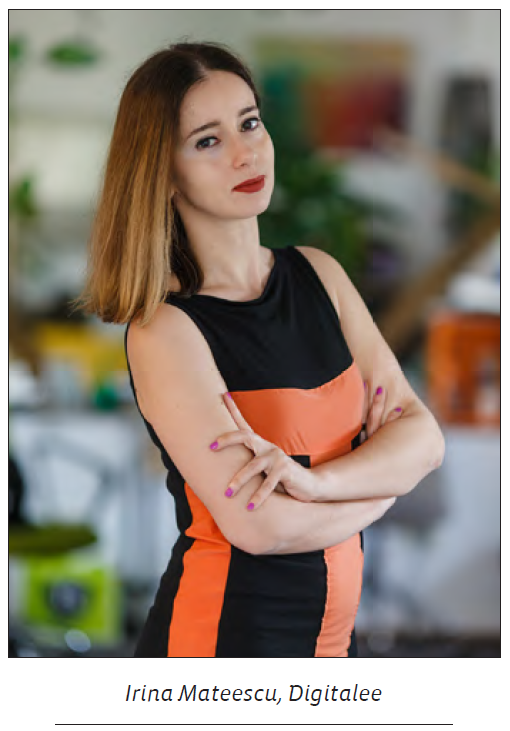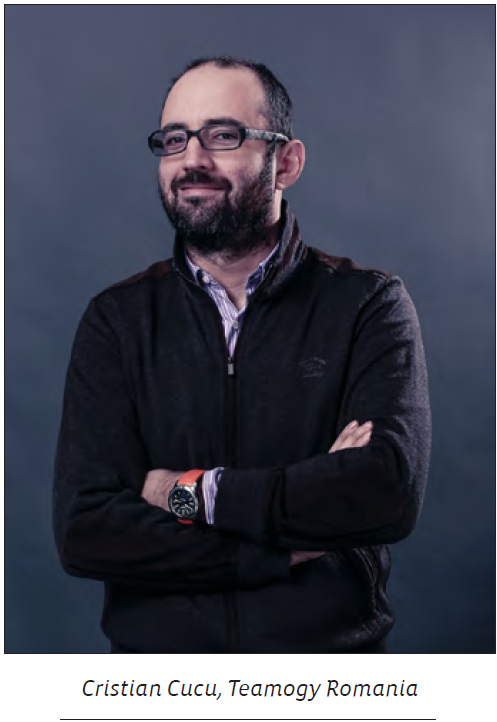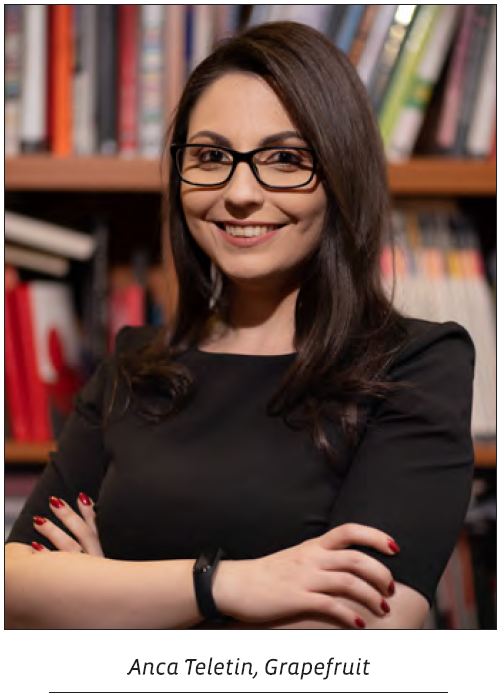The COVID-19 pandemic has changed the way we live and structure our lives from one minute to the next. And even though some categories of people were already used to working from home or from other locations rather than the regular day-to-day office, the situation has proven difficult or challenging for most of us.
By Romanita Oprea
A 2012 study found that when faced with a creative task, people were more productive working from home, while other research has suggested that structure kills creativity. But nothing had really prepared us for what was going to happen this year. Earlier, the ability to work from home was believed to be an important contributor to work-life balance, but in the current reality, with everyone staying at home, it has turned into a major factor that disturbs the work-life balance. It is important to prioritise both professional and personal tasks and handle all of them in a highly efficient manner. But what can we do to make sure we can still be creative and productive? Manuela Vasiliu, deputy managing director at United Media Services, believes that when looking at possible tips & tricks to remain creative during this work-from-home pandemic environment, it is important to also have an overview of the situation. It was a major change for many of us, a first such experience. We’ve been preoccupied with being safe, staying positive, and adapting logistically.
“Fortunately, the team’s dynamism helped us to adjust quickly and keep our focus on ongoing projects and campaigns. Once the team was restored in the work from home formula, we started developing a new routine: we established regular online meetings with the entire organisation or for each department, we had presentations with tips & tricks for how to better organise and separate work from leisure time and space, and so on,” said Vasiliu.
The United Media Services team also found it very important to stay tuned to “outside the organisation” environments, maintain close communication with clients and keep up with developments in their fields. Therefore, they were able to recommend tailored and “on-the-spot” communication solutions. “In a nutshell, our strategy was to maintain our daily work routine as much as possible, to have an open and cyclic communication with the team, to “overuse” video meetings in order to lift morale and have the same great results and ideas United Media clients were used to,” Manuela Vasiliu added.
In Grapefruit’s situation, even though it was difficult in the beginning, teams were able to adapt quickly to the new conditions given the fact that they used to work from home in the past too, albeit not all of them at the same time. According to Anca Teletin, chief operations officer at Grapefruit, it’s easier to stay creative when you know you have a plan for any scenario. She had to consider the financial component and optimise costs, finding alternative solutions in order to ensure a healthy cash-flow. They also had to recruit more people because of the increased number of requests for digital services, so she planned everything out to make sure nothing was left uncovered.
“My creativity was best used when we needed short-term solutions to all the isolation this pandemic brought on. We created virtual Coffee Breaks so that everyone would have the opportunity to chat in a short break like we used to do at the office. We scheduled weekly meetings with all the Team Leaders to make sure everyone was doing well and they didn’t have any difficulties in the current situation. We also offered more rewards than before and even updated our Rewards Plan with monthly surprises for our top performers,” Teletin explained. She adds that parents got flexible working hours given the fact that many of them were tending to their children’s school schedules. They also got baskets with vegetables or sweets as small gifts delivered directly to their home address when there was a company celebration or just as an appreciation gift for their hard work. This way they made sure to do everything in their power to keep people positive and motivated.
In turn, Eglantina Becheru, creative lead/media, messaging & CE manager at Philip Morris International, says that rather than a state of mind, creativity is a state of being for many individuals and professionals. However, “staying creative during the pandemic started as a must, an opportunity to rethink our business strategies in order to bring relevance to consumers and ended up being a tremendous challenge for many industries and jobs, including ours.” But it’s exactly the challenge to quickly adapt to the “New Normal” that motivated them in the process, alongside creating new routines with focus on bi-weekly team catch-ups and design thinking exercises, uninterrupted communication (availability for team members), collaboration with experts in trend forecasting, stretching the limits of imagination and knowledge to build different scenarios on weak signals that can later develop into macro-trends. Last but not least, staying in touch with their creative partners in order to keep one eye on the present and the other one on the future.
Irina Mateescu, managing partner at Digitalee, noted that working from home didn’t start with the COVID-19 pandemic. It was already a trend. We were all envious of digital nomads or other types of professionals that could work from anywhere in the world while providing evidence on social media about their out-of-office lifestyles.
“Looking even further into the past, the culture of work developed inside our homes. In the last centuries, craftsmen, bakers, pastries, tailors, shoemakers, and artisans all had workshops in their own yard or on the ground floor of their houses, mixing living with working in the same space. Keeping their occupations around the house was also a way to pass the skills to sons and daughters because they were spending a lot of time with their families in those workshops,” Irina Mateescu argued.
What the COVID-19 pandemic did to our way of working was that it disrupted communication and slowed down the effervescent lifestyle built around offices. In the long term, some professionals may face productivity gaps, anxiety episodes due to the lack of face to face communication, maybe even some loathing towards digital since collaboration between professionals and brainstorming sessions will mainly happen online. “For the short-medium term I am sure we had all postponed plans we had for ourselves or for our households, which needed to be prioritised, and that the pandemic has forced us to act on them. “Beside usual stuff like Zoom, Google Hangouts or Google Calendar, we did not use anything innovative. We kept in touch with each client and team member because we did not want to completely replace human interaction with technology. At the beginning of each day we recap daily tasks and reconfirm with our clients that working from home due to COVID-19 did not cause any chaos and that we are handling their projects as normal. For my agency it was a very important test. I found out that our workflow can be easily scaled even if our philosophy is to deliver custom digital communication services according to each client’s industry. I really think that we came out stronger after these months of pandemic,” said Mateescu.
Keeping energy and productivity levels up
What keeps up the energy and productivity levels inside Eglantina Becheru’s team is the openness to pilot new ideas, constant empowerment, and resource allocation based skills while making sure that no team member is overloaded. Moreover, (re)ensuring the clarity of the desired outcome during the process, as well as the satisfaction of seeing concrete results after each initiative or project phase also contribute to the overall productivity level.
On this matter, Anca Teletin believes that that productivity also comes from the way one structures and organises his or her work. And she did things in a way that she could be both a mother and the Chief Operations Officer. To make sure that the staff’s work-life balance remained in place, their project meetings were strictly based on objectives, without any small talk or changing the subject. This way they wouldn’t have a day full of meetings and with no tasks completed, and they could avoid working overtime.
For United Media, culture has always played a key role. Its employees are open, friendly, and communicative, most of them are also friends outside the office and they’ve never missed any opportunity to bond. “We moved all that online; we had “Teams” birthday parties, new clients celebrations, informal discussions on hot topics, etc. Besides that, the team was kept in the loop with all the developments of the business as well as encouraged to express any concern or question about the special context we were going through,” Vasiliu explained. In recent years, United Media has had a focus on expanding its digital services and capacities through a separate division – United Interactive. Therefore, working in digital made it a bit easier and also opened up opportunities faster. Many of the agency’s clients moved their attention and a bigger share of their resources to online communication, while those who were digitally based increased investments. More pitches were also on the line and they could capitalise on their experience to expand their portfolio. Strictly from this point of view, it was a good growth opportunity.
Irina Mateescu had had the experience of working from home for about 4 years (between 2013 – 2017) and she believes that one’s productivity level decreases after one or two years. According to Digitalee’s managing partner, although it’s fun in the beginning and you can work on your business plan in your pyjamas, have a break and watch an episode of your favourite sitcom, cook your favourite food in your lunch break, etc., after a while your free time starts to blend in with your business time, and this is when productivity starts to drop. “In my opinion, working from home is not creating a work culture. It is definitely a good shift for a wide range of freelancers. When productivity starts to decrease, you can switch projects among the team. Keeping a good level of energy is up to every person, so I do not know if we can talk about patterns,” said Mateescu.
Meanwhile, companies and agencies are using special tools to help them be more efficient and productive and improve their workflow. In Philip Morris’s case, rather than it being about tools, it is more about a philosophy: “people centricity.”
“Coaching plays an essential role for this and it is a two- way-road, as it nurtures not only the development of the team I’m working with, but also my self-development. We follow same ‘people centricity’ philosophy in all the projects we develop by defining concrete empathy maps and applying design thinking solutions to every brand experience. In the end, brands are made by people for people,” said Eglantina Becheru.
One of those tools is Teamogy, which can now be found in Romania too. Teamogy is a tool that helps every business – both the management and executive teams – to work together without the help of any other tool/application. You can chat, assign tasks, brainstorm, manage tasks, budgets, timesheets, invoicing, reporting, and so on. One can even say that this tool is another member of the team. It actually eases the lives of strategic people, from both the business and creative sides, by being the only tool they will need in order to communicate, to change ideas, to see their capacity planning, their tasking.
“Teamogy is great, especially during this period. Even if part of your team works remotely, all you need is a web browser and internet connection to make it work. You can get a great overview of your entire company’s operations on-demand and in real time, including job management, important documents, time tracking and management, and financial results. That will minimise and lighten the administrative load. Thanks to Teamogy, you can eliminate the chaos, as all your business data is connected and integrated into one homogeneous system. It is simple and intuitive for daily tasks and management, as well as cost-effective and better value for money,” explained Cristi Cucu, country manager at Teamogy Romania.
Challenges
Knowing that adapting to the new situation and being flexible and quick is not something very easy to do, especially for bigger teams, it was only natural to talk to our respondents about the main challenges they had encountered and how they managed to respond to them.
“Challenge was the watchword during the first pandemic months. Physical distance, missing the office energy, the vortex of information, uncertainty, isolation, more time spent to make sure communication was correct, keeping the team engaged, and maintaining the quality of work are only a few of them. Given the unpredictability of the context, we took it one step at a time and tried to deal with each new situation separately,” said United Media’s representative.
The greatest challenge brought by COVID-19 was the separation from people during lockdown, which today has turned into limited interaction due to social distancing rules. It was and still is a social and psychological test for many of us. “Establishing new routines enabled by digital tools was just a way to overcome this challenge. Taking a counterintuitive approach where all restrictions become opportunities is the second one. So, it’s all about changing mindsets. Not accommodating a new mindset just like we would a seasonal item in our wardrobe, but changing it completely. From now on, this is how things are going to be. And I will not hate it, I won’t complain about it, I will be grateful and do my best to explore New Normal’s dimensions because it has many things to offer,” said Becheru.
In Anca Teletin’s view, the first challenge was online recruiting. She held interviews only through Google Meets and it was hard to make sure that the person she was interviewing was a good fit for the team.
“I couldn’t feel their overall energy, observe their behaviour like I did in live meetings, and this made it quite challenging. The second and biggest challenge was reassuring the team that we had a plan, that we were safe and that everything was taken care of, financially, logistically, etc. The third was making sure I was there for all my colleagues at all times. I wanted to make sure that they didn’t feel my absence and they knew I was there to help, support, listen, whenever they need me,” added the Grapefruit’s representative.
Going deeper into the reality of this period, Irina Mateescu pointed out the unpredictable cash flow on the business side and the fact that plans to hire more people at the end of spring had to be postponed.
Back to the office
As Irina Mateescu encouraged every person from her team (colleagues & collaborators) to work in the office as much as possible while taking care of their health, they stayed home during lockdown the whole time, but starting May 18th they began working from the office, providing safety equipment (masks and gloves) for everyone who came to work. “I agree with people doing a mix: some days working from home and some from the office, just to keep good vibes and energy level up. I think people should feel comfortable with a style of working and be as flexible as the work culture you are trying to build allows you to be,” said Digitalee’s managing partner.
In Grapefruit’s case, when the number of cases started dropping, they decided they could go back to the office, and they created a “Back to the office” plan. This plan included the safety measures they would take, the number of people allowed to come in at once, the distance between desks, and other social distancing measures. It went well, but once they saw a massive increase in cases, they went back to working from home. “We put our employees’ safety first, and since our productivity isn’t affected, it was safer to go back home. Even though there is a need for physical interaction, the team understood, packed up their laptops, and went back home. We’re not thinking about going back to the office until it’s safe enough for everyone. I believe that 2020 was a transformative year for all businesses, no matter their size. Above all, we learned that we needed to embrace a flexible mindset to overcome any challenge, to be quick in our decisions and of course, be as digital as possible,” concluded Teletin.
A more cautious attitude is also shared by United Media, who do want to return to their past work routines at the office, but everything will depend on the evolution of COVID-19 cases. “We are hopeful that things will come around in the near future and we’ll be able to physically reunite at our office building,” said Vasiliu.
“I miss the office and the effervescence of people working together, loudly sharing their ideas and opinions, quickly finding solutions by just going to a different department. And I’ll probably continue missing it for a while, as the current recommendation is to continue working from home until further notice, depending on the evolution of the pandemic,” added Eglantina Becheru.
At Teamogy, they have decided that everyone should work where they think it’s best this year. Going to the office is definitely not mandatory. “I think that using this tool has brought us much closer together than being under the same roof,” Cucu concluded.


:quality(80)/business-review.eu/wp-content/uploads/2020/11/romanita1.jpg)

:quality(80)/business-review.eu/wp-content/uploads/2024/07/vodafone-RO.jpg)








:quality(80)/business-review.eu/wp-content/uploads/2024/06/22C0420_006.jpg)

:quality(80)/business-review.eu/wp-content/uploads/2024/06/COVER-1-4.jpg)



:quality(50)/business-review.eu/wp-content/uploads/2023/08/Screenshot-2023-08-18-at-4.04.07-PM.png)
:quality(80)/business-review.eu/wp-content/uploads/2024/06/br-june-2.jpg)
:quality(50)/business-review.eu/wp-content/uploads/2024/07/BeFunky-collage-37-scaled.jpg)
:quality(50)/business-review.eu/wp-content/uploads/2024/07/04_ThinkPad_T14s_6_Business_Coworking.jpg)
:quality(50)/business-review.eu/wp-content/uploads/2024/07/Iulia-Surugiu-scaled.jpg)